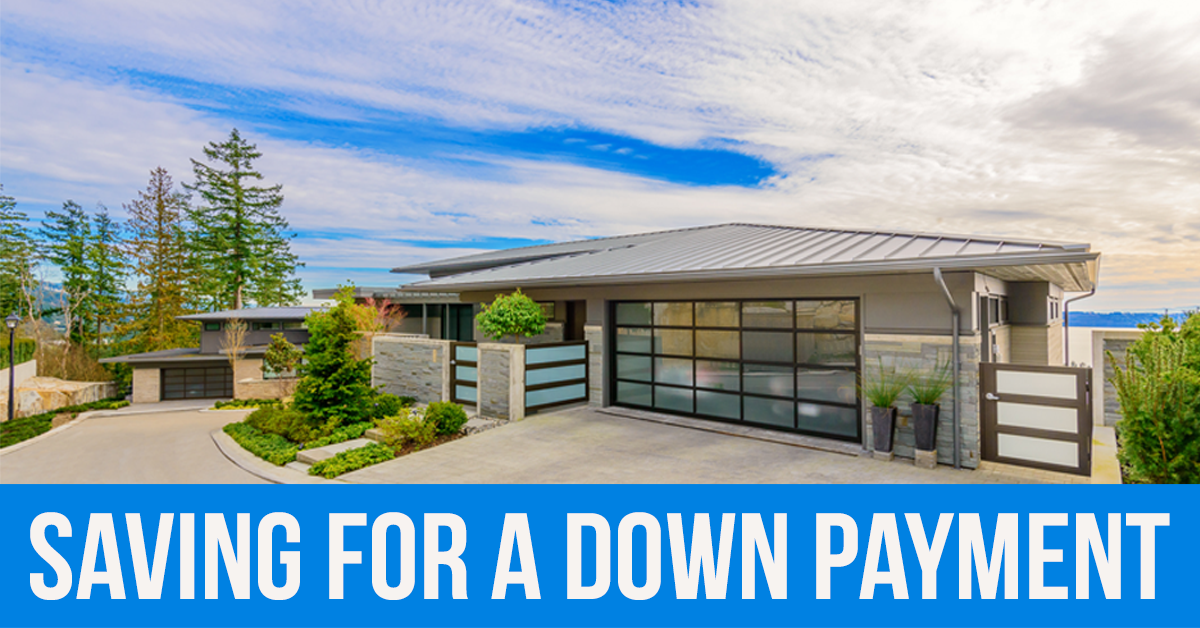Buying a Home: Saving for a Down Payment
Saving for a down payment to buy a house can seem overwhelming unless you break it down into small, actionable moves. It will likely take a while to accomplish, but with a couple of shortcuts and a never-thought-of-that hack or two, you might get it done sooner than you expected.
Four basic steps can get you to your goal: Knowing how much you’ll need, socking the money away, tapping any available outside sources to seed your fund and gaining a small edge with interest.
1. Know how much down payment you need
Most lenders are looking for a 20% or higher down payment on a conventional loan, but there are options where you can put down much less. However, with a smaller down payment, you’ll likely be required to pay for mortgage insurance. That protects the lender from you defaulting on the loan. If there is no mortgage insurance requirement, there can be other upfront or ongoing fees. You’ll always want to be aware of loan costs.
Some low-down-payment programs you might qualify for include:
GSE-backed loans: Fannie Mae and Freddie Mac, the government-sponsored enterprises that help drive the mortgage market, are both currently backing 97% loan-to-value loans. That enables lenders to offer 3% down payment mortgages to qualified buyers.
FHA: The Federal Housing Administration offers 3.5% down payment mortgages through participating lenders. FHA loans are also easier to qualify for and have slightly lower rates than conventional mortgages.
VA: Eligible veterans, as well as active duty service members and their families, can qualify for Veterans Administration loans. A VA mortgage requires no down payment or mortgage insurance.
USDA: Homebuyers in rural and suburban areas may be able to qualify for home loans offered by the U.S. Department of Agriculture. USDA loans offer low rates and 100% financing.
2. Down payment savings hacks
Whatever your down payment goal, it can help to mount a multi-tiered attack. Here are some savings hacks:
- Automatic transfers from your checking account to your savings can help to make the process mandatory — and maybe a little less painful.
- The $5 bill savings plan. Every time you receive a $5 as change, you set it aside. One woman claims to have saved $36,000 with this little trick, though it took 12 years.
- Save raises and bonuses rather than spending them.
- Set aside tax refunds.
- Keep the change. At least a couple of banks have variations on this theme. For example, Bank of America allows debit card users to sign up for a service that rounds up purchases to the nearest dollar and puts the change into a linked savings account.
- Use cash rewards credit cards to get cash back on purchases and put the rebates in savings.
- Snag a few bucks here and there. Got a checking account a few bucks over a round number? Take the extra and transfer it to savings.
- Keep the car and save the payment. Paid off your car? Resist the urge to buy new and save the monthly payment.
- Start fast, and the momentum will build. Seed your down payment fund with a bonus or other windfall. A quick start might motivate you to see the balance build even bigger.
- Visualize your goal. Slap big, beautiful photos of your dream house on the refrigerator, near your office workspace — and wrap a small one around the primary credit card in your wallet. You might charge less and save more.
- Use an app to track progress. Mint, SavedPlus, Dollarbird and other budgeting tools may give you even more incentive to save.
3. Tapping other funding sources
If you’re not a disciplined saver, skip the next three paragraphs. Tapping retirement accounts for help with your down payment can really set you back in your life-after-work plans. But it’s an option we’re obligated to discuss.
First-time homebuyers can withdraw up to $10,000 from an IRA without penalty to purchase a home. If you’re married, that could mean applying as much as $20,000 to your down payment, because both spouses can draw $10,000 from their respective IRAs. Of course, you’ll have to pay the income tax due on the withdrawal, unless you have Roth IRAs.
Most 401(k) plans allow you to take a “loan” from your savings and pay yourself back, with interest. This can sound appealing, until you consider the possible impact of taking such a large lump sum out of the market during the time it will take for you to repay the withdrawal. Plus, if you change jobs or get laid off, the entire balance comes due, or you’ll have to pay the income tax, plus a 10% early-withdrawal penalty. Some plans even charge fees for loans and limit the payback term to five years.
Seeding your savings with either of the above strategies might jumpstart your efforts, but each can have some serious long-term consequences.
Better yet, investigate state and local programs that offer down payment grants or assistance, as well as tax credits and help with closing costs. These programs are often run by Housing Finance Agencies (HFAs) or through grants issued by the U.S. Department of Housing and Urban Development (HUD). (Click on your state and then “Homeownership Assistance” in the left sidebar.)
NerdWallet also offers other down payment and home buying resources.
4. Using interest to gain an edge
Now that you have a plan to save for your down payment, where do you put the cash? Your first thought might be to invest it, with the hope of supercharging your return on what may be a meager starting balance.
Unless your target date for buying a home is way down the road — say eight, 10 years or more — don’t do it. The stock market is too volatile for short-term savings. One severe market downturn can set you back significantly, not to mention discourage your ongoing efforts. Instead, take a look at these options:
High yield savings accounts: These days, “high yield savings account” is a bit of an oxymoron. But with easy access, total liquidity and FDIC insurance, it’s a common choice for short- to mid-term savers. Banks, especially online versions, like Capital One 360, Ally and Synchrony offer decent rates. Be sure to check with your local credit unions, as well.
Money market accounts and funds: Money market accounts and funds can also be good options for the short-term saver. Money market accounts are insured and offered by banks and credit unions, while money market mutual funds are not insured and available at investment brokerages.
As with savings accounts, it takes a bit of shopping to find decent returns.
Certificates of deposit: Perhaps the best option is buying certificates of deposit(CDs) timed to mature around the time you expect to have the bulk of your down payment saved. CDs offer a slightly higher rate than savings accounts or money markets, but that’s because your money is locked up for the term of the CD: six months, one year — even two, three years or more.
The fact that your money is inaccessible unless you pay a penalty may help keep those of us easily tempted to tap savings on track.
While all of these options may currently have skinny returns, as interest rates rise, your profits will too. Besides, saving for a down payment may be more about keeping the cash out-of-sight and out-of-mind rather than scoring big returns. And each of these savings options can easily be set up for automated transfers from your checking account.
This article originally appeared on NerdWallet.


